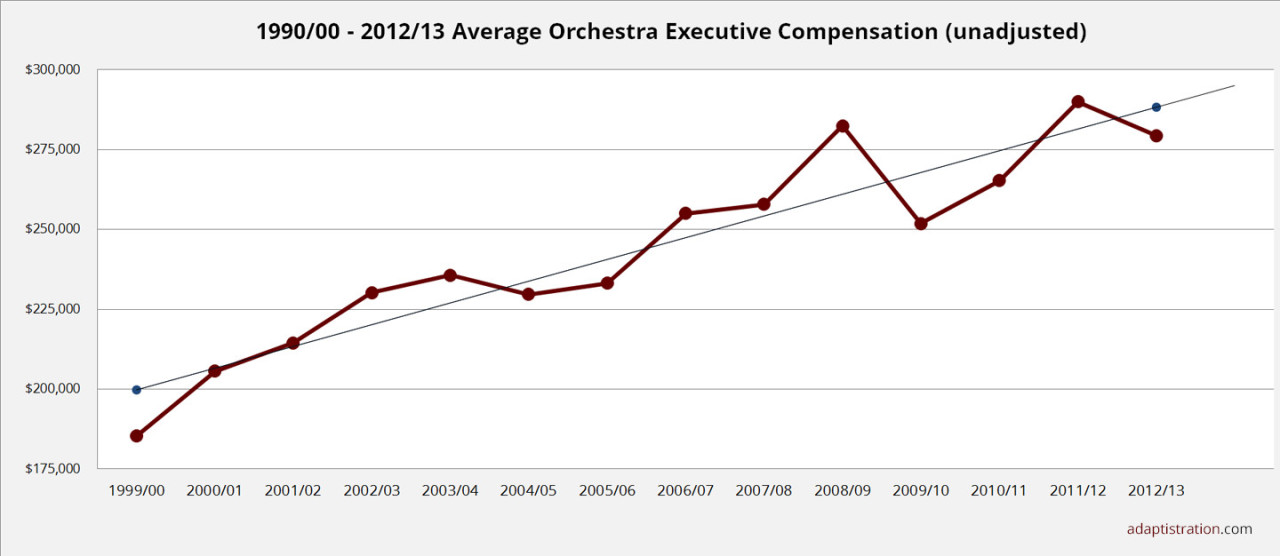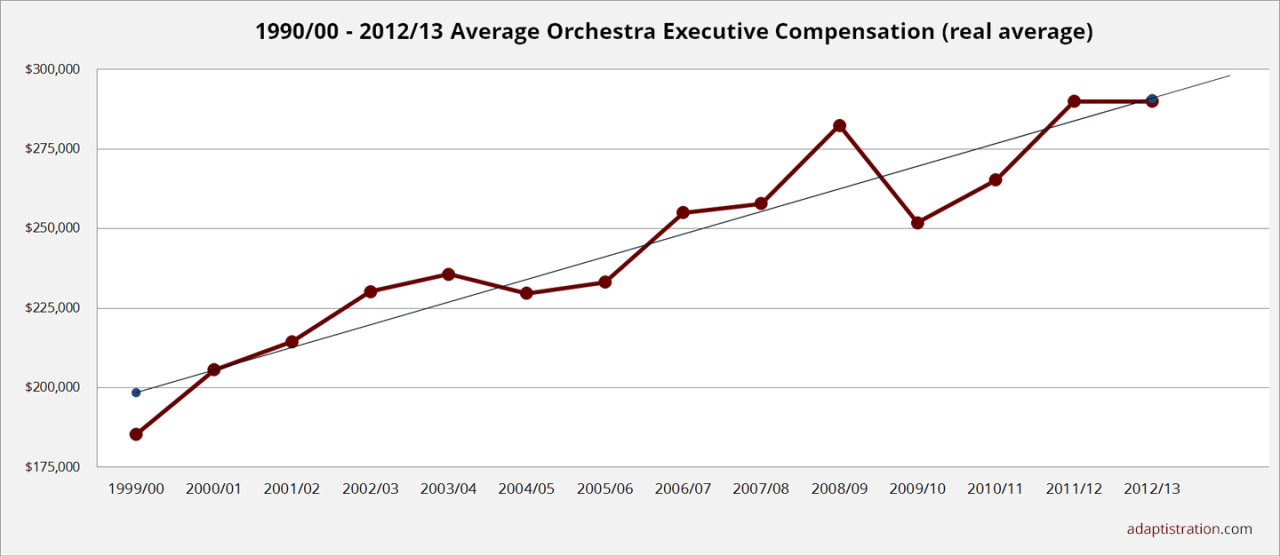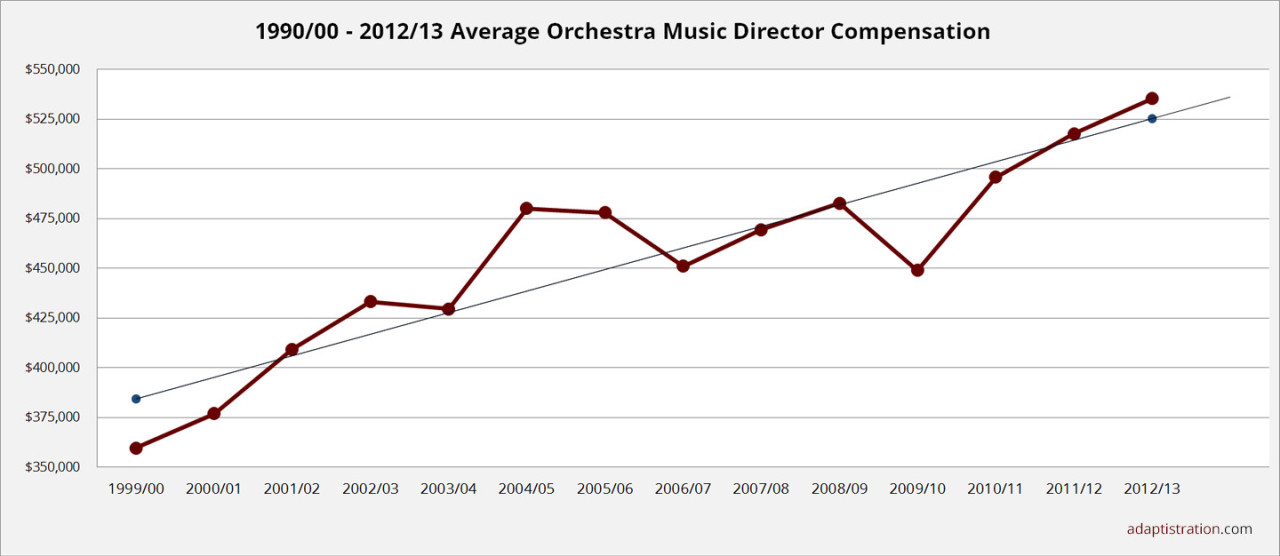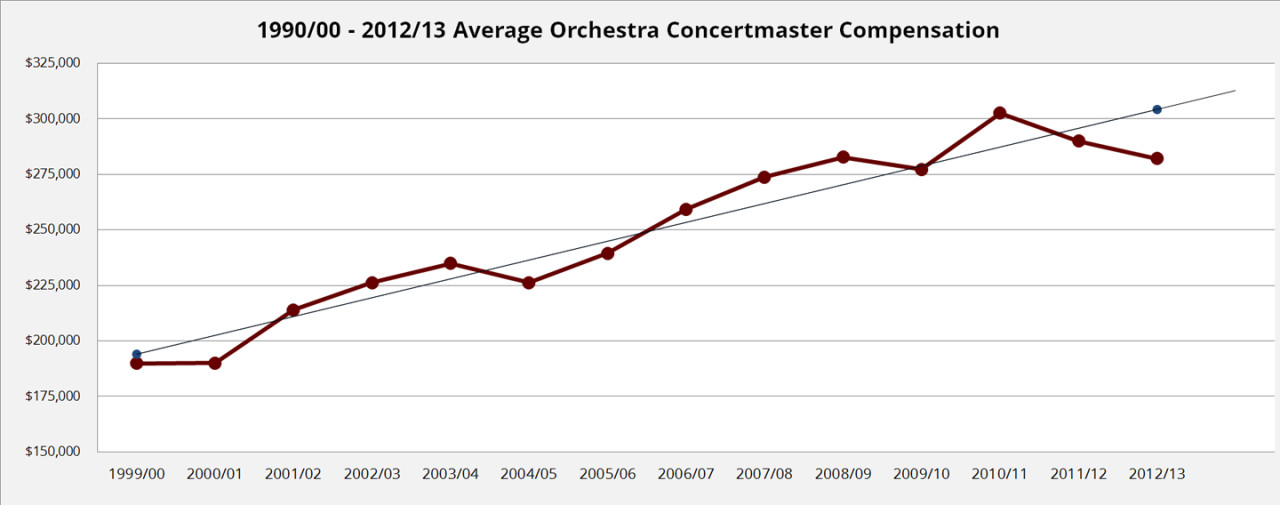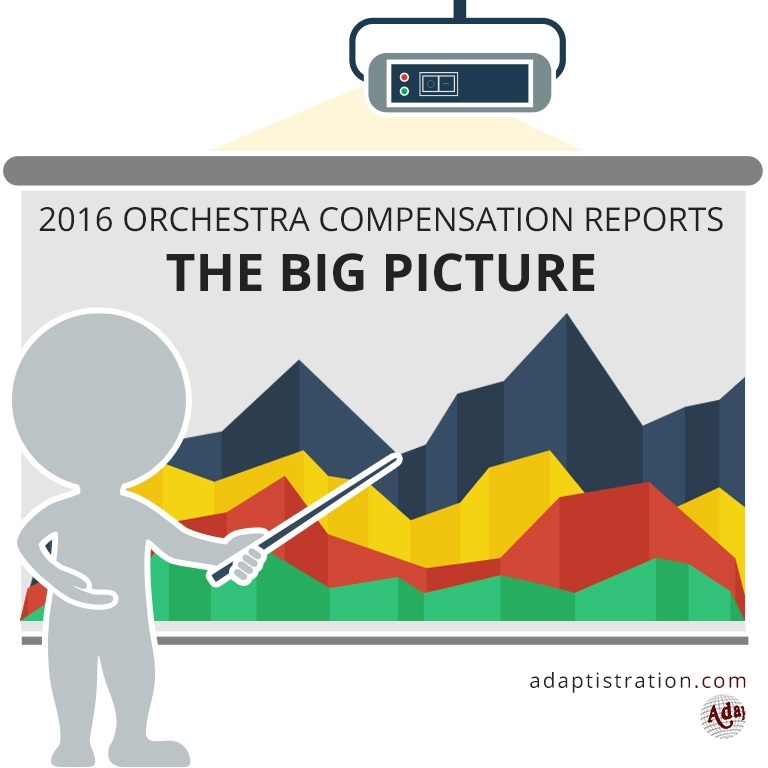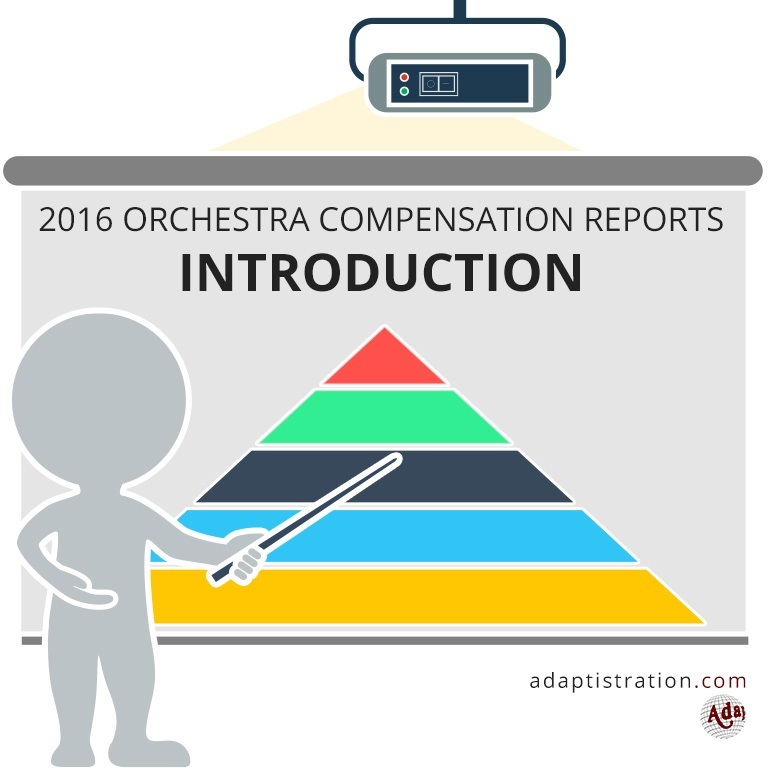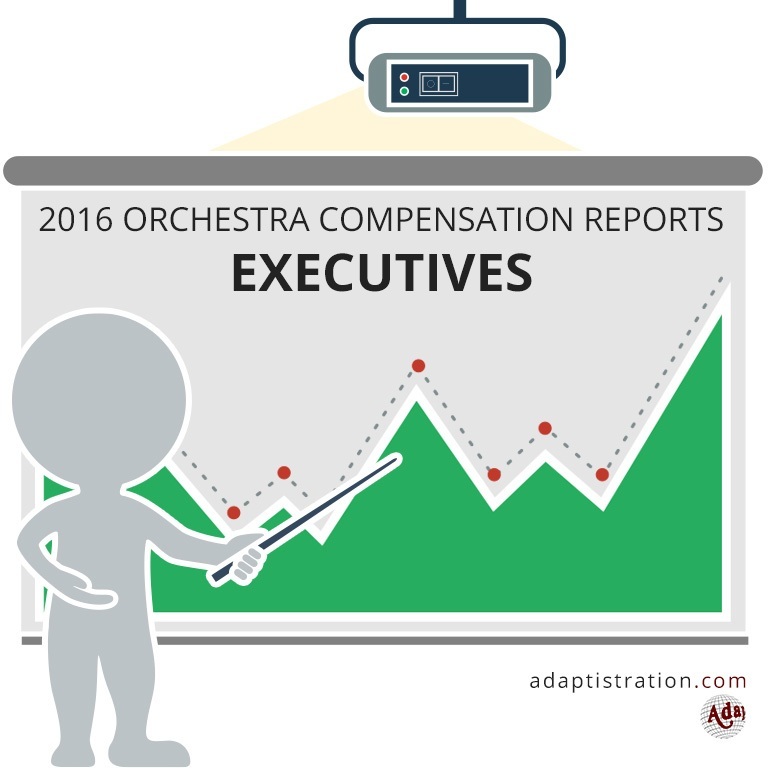Too Much Information!
 For the past few years, one of the most popular items in the orchestra compensation reports is a big picture overview of all compensation alongside Total Expenditure figures and it seems that adding more orchestras in this year’s reports tripped the threshold for how much info the responsive charts could process (those are the nice info tables that rearrange everything into single columns on smaller devices, like Smartphones, so it is easier to read).
For the past few years, one of the most popular items in the orchestra compensation reports is a big picture overview of all compensation alongside Total Expenditure figures and it seems that adding more orchestras in this year’s reports tripped the threshold for how much info the responsive charts could process (those are the nice info tables that rearrange everything into single columns on smaller devices, like Smartphones, so it is easier to read).
Consequently, we’re going to go old-school and use a standard html table. Yes, a little bit of me dies inside to do it but that’s a price worth paying compared to not providing any of the information! Having said that, there are a few items you won’t see in this version that were part of the responsive tables, such as the icons indicating increases or decreases from the previous season; moreover, there are no tooltip style notes to explain any unusual entries.

14 Year Trends
They don’t say a picture is worth a thousand words for nothing and to that end, the following charts help illustrate how much has changed since the 2008 economic downturn as well as the smaller, but at the time equally concerning, post 9-11 downturn.
The linear trend lines for each chart demonstrate that both executive and music directors have experienced sizable gains since the initial drop in average income at the downturn’s onset, so much so that they surpassed expected gains. At the same time, average concertmaster compensation has increased at rates below projections.
CEO Real Average Compensation Explained
The 2012/13 season continued the overall field-wide trend of heated labor disputes; the Minnesota Orchestra went dark for the entire season while the St. Paul Chamber Orchestra lost most of their season and the Indianapolis Symphony had a shorter, but equally bitter, shutdown. When combined with a higher than normal number of partial year compensation entries among the higher budget orchestras, expanded efforts become necessary in order to process data that reflected real compensation trends.
For example, the CEOs in Dallas, New York, and Pittsburgh all went without a full season CEO and with those positions historically in the Top 10 highest paid positions, it contributed to an artificial drop in average compensation figures. This was exacerbated with a string of open, interim, and/or partial season CEO positions in St. Paul, Oregon, New Jersey, Jacksonville, Indianapolis, Memphis, Hartford, and Charlotte.
Consequently, the face value change in average compensation from 2011/12 to 2012/13 season was a -4.65 percent decrease; but when adjusted for those unfilled, interim, and partial season anomalies, the difference was a negligible -0.28 percent decrease. In the end, the latter figure is far more accurate and indicates that orchestra executive compensation held steady for this season.
When compared to the -6.55 percent drop in average Total Expenditures, the null growth in executive compensation looks pretty good.
The Deliberation Continues
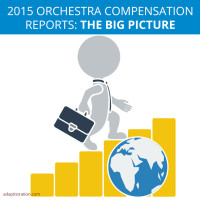 When the compensation reports were launched back in 2005, there was a great deal of reader discussion about the value of each stakeholder group along with questions about why stakeholders didn’t share comparatively equal gains and losses from one season to the next. But over the past few years, that discussion died down, especially in the wake of the economic downturn.
When the compensation reports were launched back in 2005, there was a great deal of reader discussion about the value of each stakeholder group along with questions about why stakeholders didn’t share comparatively equal gains and losses from one season to the next. But over the past few years, that discussion died down, especially in the wake of the economic downturn.
Nonetheless, it is fascinating to see what the data begins to illuminate; for example, during the season before the economic downturn, the average executive experienced an increase of approximately 10 percent. But that gain was wiped out entirely the following season with a slightly larger average decrease.
Consequently, it seems clear that the average orchestra executive initially responded to the downturn by sharing in institutional sacrifice but that trend was very short lived and by the time the season of discontent was in full swing, executive and music director compensation increases were among the strongest over the past 13 years.
In short, the practice of compensation lost one year through shared sacrifice driven austerity seems to be made back up in very short order.
Nonetheless, it will be fascinating to see whether or not there are any changes in how boards initially set and evaluate compensation for executive and music director stakeholders. Likewise, it will be fascinating to see if some of the growing patron stakeholder movements will have any impact on these traditionally closed door discussions related to rewarding effort vs. achievement, and how much, if any, the general state of US executive culture influences compensation trends inside the orchestra field.
